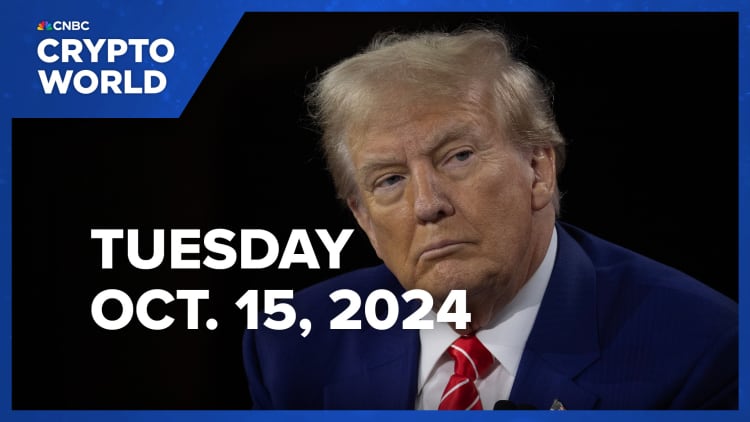It’s been just over twenty-four hours since the launch of the Donald Trump-endorsed digital coin “WLFI,” and the token is failing to deliver on the ambitious fundraising goals set by its founding team.
World Liberty Financial — which bills itself as a crypto bank where customers will be encouraged to borrow, lend and invest in digital coins — began its token sale on Tuesday morning. On Monday, project co-founder Zachary Folkman bragged in a pre-launch stream on X that “well over 100,000 people” were whitelisted to invest.
“We knew that this project was highly anticipated. We knew that there was a lot of excitement in the marketplace,” said Folkman to the 12,000 people tuning into the event on X. “However, these numbers are just, in my opinion, unheard of, and I think we’re setting all sorts of new records in crypto.”
But blockchain data tracked by Etherscan shows that about 9,050 unique wallet addresses hold the token as of Wednesday morning, representing roughly 9% of the total number of people who registered.
Trump pumped the coin in a video post on X on Tuesday evening, promoting the World Liberty website and telling his followers that the token sale was live and that “crypto is the future.”
In a roadmap given to prospective investors first viewed by The Block, the WLF proposal says the coin is looking to raise $300 million at a $1.5 billion valuation in its initial sale. The platform says, so far, it has sold more than 788 million tokens at $0.015 per token.
That is less than 4% of the 20 billion tokens made available for public sale and amounts to around $11.8 million, still well off the $300 million fundraising target.
WLF did not respond to CNBC’s request for comment.

Part of the problem was that the project website, the exclusive marketplace for the new coin, suffered regular, lengthy outages frequently showing a page saying, “We are under maintenance.”
But there are other roadblocks that may have impacted the coin’s debut. WLFI is a Regulation D token offering, which means retail investors have largely been cut out of the process.
This provision makes it possible to raise capital without first registering a security with the U.S. Securities and Exchange Commission, but certain conditions must be met, such as limiting the size of the sale and restricting it to accredited investors, defined in part as having a net worth of more than $1 million. While the offering is one way to reduce legal exposure, it cuts down on the size of the potential investor pool.
The World Liberty team has also been specific in calling WLFI a governance token that allows holders to vote on decisions regarding the protocol, but would not signify equity in the venture itself.
As of now, however, there’s nothing for WLFI token holders to vote on since the crypto bank connected to the digital coin doesn’t yet exist.
Last week, WLF began the crypto bank approval process with Aave, one of the longest-running and most-trusted crypto lending platforms.
World Liberty has not released an official white paper or formal business plan to the public. A 400-word proposal posted to Aave’s governance forum, which is used to discuss and vote on proposed projects such as WLF, is nearly all that’s been disclosed.
Coin holders get a sort of I-O-U until the platform is approved and goes live. In the meantime, investment in the coin goes to the platform’s treasury.
WLF’s website adds in the fine print that Trump and his family members may receive tokens from World Liberty Financial and that they are “entitled to receive significant fees for services provided to World Liberty Financial, which amount cannot yet be determined.”

Read the full article here




